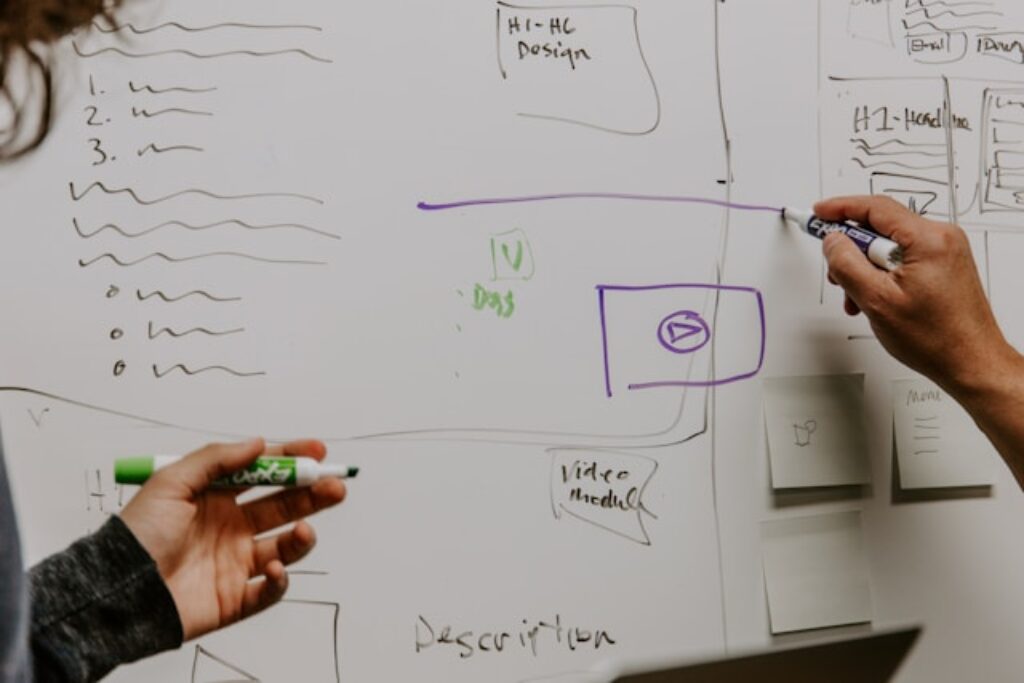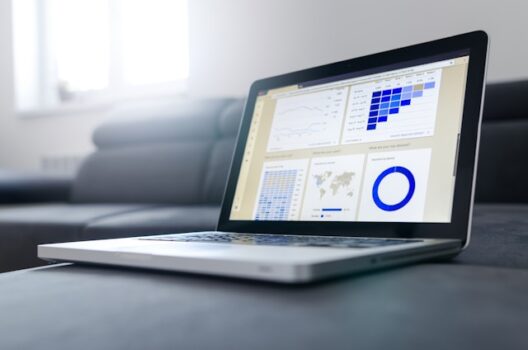If you’re selling anything online—courses, digital products, software, or physical goods—building a proper sales funnel is non-negotiable. A well-structured funnel not only increases conversions but also maximizes revenue per customer by guiding them through an intentional buying journey.
In this article, we’ll walk you through how to build a complete sales funnel that includes upsells, downsells, and thank-you pages—and how each step works together to boost your profits.
What Is a Sales Funnel?
A sales funnel is a step-by-step process that moves a potential customer from initial interest to a final purchase. It’s not just about making the sale—it’s about increasing the lifetime value of each buyer by offering additional solutions at just the right time.
The key stages of a full funnel usually include:
- Landing Page / Opt-in
- Main Offer (Sales Page)
- Upsell
- Downsell
- Thank-You Page
Step 1: The Core Offer (Main Sales Page)
This is the entry point of your revenue funnel. It’s where your prospect turns into a paying customer.
Your core offer is the main product or service you’re trying to sell. It should solve a clear and urgent problem your target audience is actively looking to fix. Whether it’s a digital course, software subscription, physical product, or coaching package—this is the centerpiece of your funnel.
What Makes a Great Core Offer?
A strong core offer should check these boxes:
- Simple to understand – no jargon, no fluff
- Clear value proposition – what do they get and how does it help?
- Low friction – the fewer clicks and doubts, the better
- Results-focused – highlight the outcome, not just the features
You want them thinking: “This is exactly what I need—how do I get it right now?”
Structuring the Sales Page
A good sales page doesn’t “sell” in the pushy, old-school way. It tells a story, builds trust, and guides the visitor toward a decision.
Here’s a typical flow you can follow:
- Headline that hooks
- Clear, benefit-driven, and emotionally resonant
- Example: “Get More Clients in 30 Days — Without Spending a Dime on Ads”
- Relatable problem
- Paint a picture of the customer’s current struggle
- Make them feel seen and understood
- Introduce your solution
- Show how your product/service solves that problem
- Explain what makes it different or more effective
- Breakdown of benefits & features
- Use bullet points, visuals, and examples
- Focus on outcomes, not just what’s included
- Social proof
- Testimonials, case studies, reviews, trust badges
- Video testimonials work even better if you can get them
- Offer details
- What exactly are they buying? How much? What’s included?
- Bonuses (optional but powerful)
- Add urgency and extra value
- Limited-time offers or exclusive bonuses work well
- Risk reversal
- Money-back guarantee, trial period, “no questions asked” refund
- Call to Action (CTA)
- Big, bold, and obvious
- Stick to one CTA per page (e.g. “Buy Now” or “Start Free Trial”)
Quick Tips for a High-Converting Sales Page
- Keep it mobile-friendly – a large portion of your traffic will be on phones
- Use a short explainer video – especially helpful for SaaS, coaching, or high-ticket offers
- Remove distractions – no unnecessary navigation or external links
- Inject personality – people buy from people. Don’t be afraid to be human
Example: Let’s Say You’re Selling a Course
If you’re selling a €99 course on “Launching Your First Online Business,” your main sales page could include:
- A headline like:
“Launch a Profitable Online Business in 30 Days — Even If You’ve Never Sold Anything Before” - A breakdown of what’s inside:
Week-by-week launch roadmap
Templates for your first landing page
3 bonus interviews with successful founders - Testimonials from past students
- A 14-day money-back guarantee
- A one-click checkout button
When this page is optimized, it becomes a money-printing machine. Every visitor who lands here should feel like they’re one click away from solving a real problem in their life or business.
Once they buy, that’s when the upsell kicks in—but it all starts with the core offer.
Step 2: The Upsell (One-Time Offer / OTO)
Once someone purchases your core offer, they’ve signaled two things: they trust you, and they’re willing to spend money to solve a problem. This is your moment to present an upsell—an optional offer immediately after checkout that enhances, complements, or upgrades the original purchase.
An upsell isn’t about pushing for more money. It’s about providing extra value to people who are already in action mode. The goal is to make it a no-brainer add-on that feels like a logical next step, not a random extra.

There are two key elements to a great upsell: relevance and timing.
Relevance means the upsell is directly connected to the customer’s original goal. If someone just bought a beginner guitar course, an upsell for a 1-on-1 coaching session or a “next level” course fits naturally. Offering an unrelated product, like a nutrition ebook, breaks the flow and feels out of place.
Timing means striking while the buyer’s momentum is high. Right after the purchase—on a dedicated upsell page—is the sweet spot. The customer has already made one decision in your favor, and their resistance to buying again is significantly lower. This is why upsells are typically one-click offers. No need to re-enter credit card details. Just click “Yes, add this to my order.”
Here are a few upsell examples across different product types:
- Digital course: Upsell a premium tier with bonus lessons or lifetime access
- Software subscription: Upsell an annual plan with 30% savings or exclusive features
- Physical product: Upsell a bundle, extended warranty, or priority shipping
- Coaching: Upsell a VIP version with private sessions or group Q&A access
The copy on your upsell page should be short, punchy, and focused entirely on one question: “How does this make the original purchase even better?” Don’t treat it like a full sales page. You already have their attention and trust. Just show the value and make the acceptance button irresistible.
A well-placed upsell can increase your average order value by 30% or more with no extra ad spend. It’s the fastest way to boost profitability in any funnel—especially if you’re operating on tight margins or paying for traffic.
Remember, you can test multiple upsells if your funnel justifies it. But don’t overwhelm users. A clean, focused upsell flow will outperform a bloated one every time.
Next comes the downsell, which helps you capture value even from the people who say no.
Step 3: The Downsell (Recovery Offer)
A downsell is your second chance to convert revenue from someone who declined your upsell. Just because they said no to a higher-priced offer doesn’t mean they’re not interested—they may just need something that fits better within their budget or feels like a safer step.
The downsell is shown after the upsell rejection, typically on a separate page. The offer should still be relevant to the original purchase, but it should be less expensive, lower commitment, or stripped-down in some way.
For example:
- If your upsell was a €299 premium course, the downsell might be a €99 “lite” version without live Q&A or bonuses.
- If the upsell was a 12-month software plan, the downsell could be a 3-month trial.
- If the upsell was a coaching package, the downsell could be a one-time recorded training.
The psychology here is simple: you’re giving the customer an easier “yes.” Maybe they hesitated because the price felt too high, or the value wasn’t immediately clear. A downsell lets you salvage some revenue while still delivering meaningful value.
It’s important not to undermine your own offer by making the downsell too good. You don’t want people to feel like they should skip the upsell just to get the better deal. A good downsell is clearly less than the upsell, but still highly relevant and beneficial.
Your downsell copy should:
- Acknowledge the pass on the previous offer (“No worries—maybe this is a better fit…”)
- Emphasize the core benefit
- Make the offer feel risk-free (limited time, lower price, easy to try)
Done right, downsells can recover 10–20% of the people who passed on your upsell. That’s pure profit you’d otherwise miss.
And once they say yes to the downsell—or move past it—you lead them to the final step of your funnel: the thank-you page. That’s where you solidify the relationship and set the stage for retention, referrals, and future sales.
Step 4: The Thank-You Page (Post-Purchase Magic)
The thank-you page is often overlooked, but it plays a crucial role in wrapping up the funnel experience—and setting up everything that comes next. It’s more than just a polite “thanks for your purchase.” It’s your opportunity to confirm trust, deliver the product, and deepen the customer relationship.
At a minimum, your thank-you page should do three things:
- Confirm the order or registration – Reassure the buyer that their payment went through and let them know what happens next. Include a summary of what they bought, when they’ll get access, and how to contact support if needed.
- Deliver the product or access instructions – Whether it’s a download link, account login details, or shipping confirmation, be clear and specific. Avoid sending people straight to their inbox to “wait for an email”—it creates friction and unnecessary confusion. If possible, deliver something immediately on this page.
- Reinforce their decision – A quick thank-you video or a message from you explaining what to expect next helps reduce buyer’s remorse. Remind them why their purchase was a smart move and what results they can look forward to.
Beyond that, a high-performing thank-you page can do even more. You can:
- Introduce a new offer – This could be a cross-sell (a related product) or a “next step” offer like a membership, coaching, or community access.
- Encourage sharing – Add social sharing buttons or referral links so customers can tell others about what they just bought.
- Collect feedback or testimonials – Ask them why they purchased, what they’re most excited about, or how they heard about you.
- Build your brand relationship – Invite them to follow you on social media, join your newsletter, or access a bonus resource.
One pro move is to personalize the thank-you page based on what the customer bought. If they accepted your upsell, show them a custom message. If they passed on everything, offer them a free bonus as a goodwill gesture. The more tailored the experience, the more connected your customer will feel.
In short, the thank-you page is your final impression in the funnel—but also the starting point for your long-term customer journey. Use it to build momentum, increase engagement, and plant the seeds for future sales.
Bonus move: Add a surprise bonus or freebie to build goodwill and reduce refund rates.
Tools to Build Sales Funnels (Without Coding)
You don’t need to be a developer to build these funnels. Tools like:
- Systeme.io
- ClickFunnels
- GoHighLevel
- Kartra
…let you create full funnels with drag-and-drop editors, built-in checkout flows, and one-click upsells.
Final Thoughts
A sales funnel without upsells, downsells, and thank-you pages is leaving money on the table. Even simple tweaks like adding a downsell or optimizing your thank-you page can dramatically improve your revenue.
By mapping out each step with intention, you’re not just selling—you’re crafting a smooth, profitable customer journey.
Ready to build your funnel? Start with your main offer and add upsells or downsells that feel like a no-brainer. Then test, tweak, and scale.
Want help picking the right sales funnel tool? Check out our full comparison of the top 10 funnel builders here.



